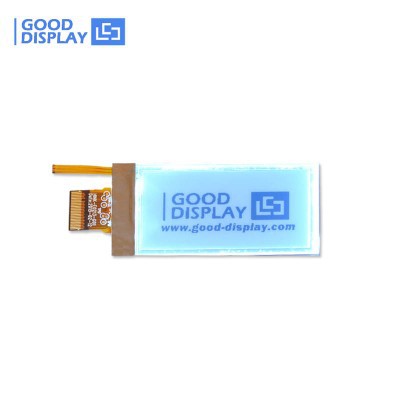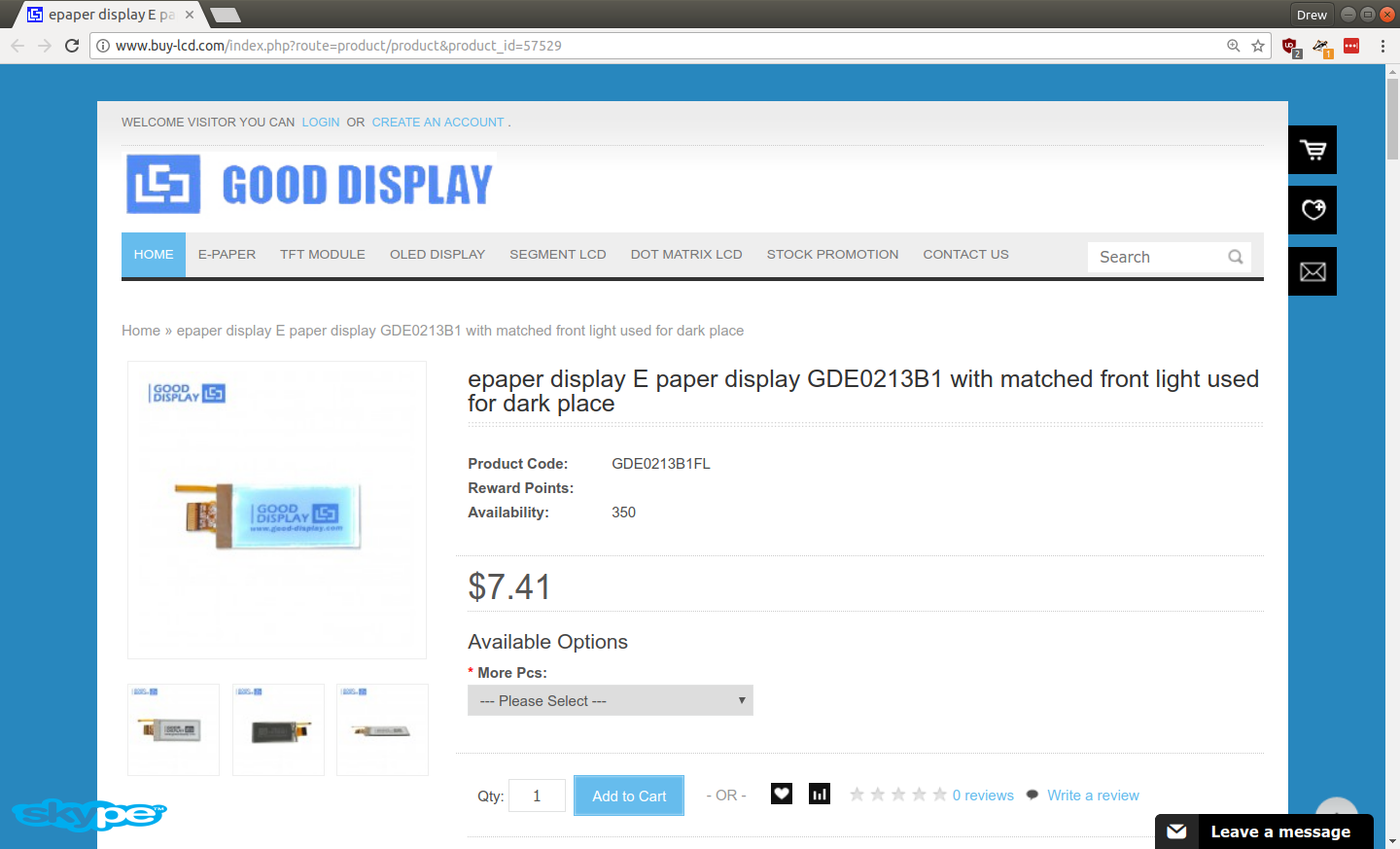
I recently came across this interesting low cost e-paper which features a backlight:
epaper display E paper display GDE0213B1 with matched front light used for dark place
www.buy-lcd.com/index.php?route=product/product&product_id=57529
It does seem that backlight might be useful as the Open Hardware Summit will be indoors.
I may order one of these displays to see how difficult it is to interface. The advantage of Waveshare is that there is already a working library with the ESP trINKet design.

 oshpark
oshpark
Discussions
Become a Hackaday.io Member
Create an account to leave a comment. Already have an account? Log In.
I'm pretty confident that the 2.13" display from waveshare (PN. 13368 ) is the same part as the 2.13" from good-display (P.N. GDEW0213Z16)
Are you sure? yes | no
E paper should be pretty readable with indoor ambient light. It might make sense to go with the most cost effective display. It looks like the back-lit models are about 2$ more expensive then their non back-lit equivalents.
I've worked with other displays from this company and they (or whoever resells them) will provide you with source code (that i got working on the ESP32). It's a bit ugly and it uses bit-banged GPIO to emulate SPI but it worked.
My understanding is that all these displays share the same controller and ribbon cable pinout. This was true for the 3 that I got. I could use the demo for the smallest of my displays and it would still work when i swapped in the larger ones.
Additionally These displays are re-badged and sold under different names. Ben Krasnow has a video on hacking these to refresh faster. The company he got his kits from is in fact "Waveshare" but you can see him looking at the controller datasheet and it's from good-display.
https://youtu.be/MsbiO8EAsGw?t=864
Are you sure? yes | no
Doesn't that pretty much defeat the whole advantage of using e-paper? I mean, if you want backlight, then the liquid crystal displays are much cheaper and also very low power — it's the backlight that eats all the energy.
I think I went through the steps you are going through now with my #CircuitPython Badge, and ultimately decided to simply write the name on the badge with a sharpie, and provide a large, bright, low-resolution display just as a programmable attention-grabbing device. You can't possibly find a lower power display than a sharpie.
Are you sure? yes | no
You can switch off the light when there's enough light to read the e-paper, but you can't do that with an LCD/TFT/OLED, so there is some advantage.
Are you sure? yes | no
Actually you can switch the backlight with the monochrome LCDs, that was my first attempt at the badge design, remember? Lameboy also does that.
Are you sure? yes | no
Those are called transflective LCDs, a family of displays that's also Wikipedia's favorite kind of word.
Are you sure? yes | no